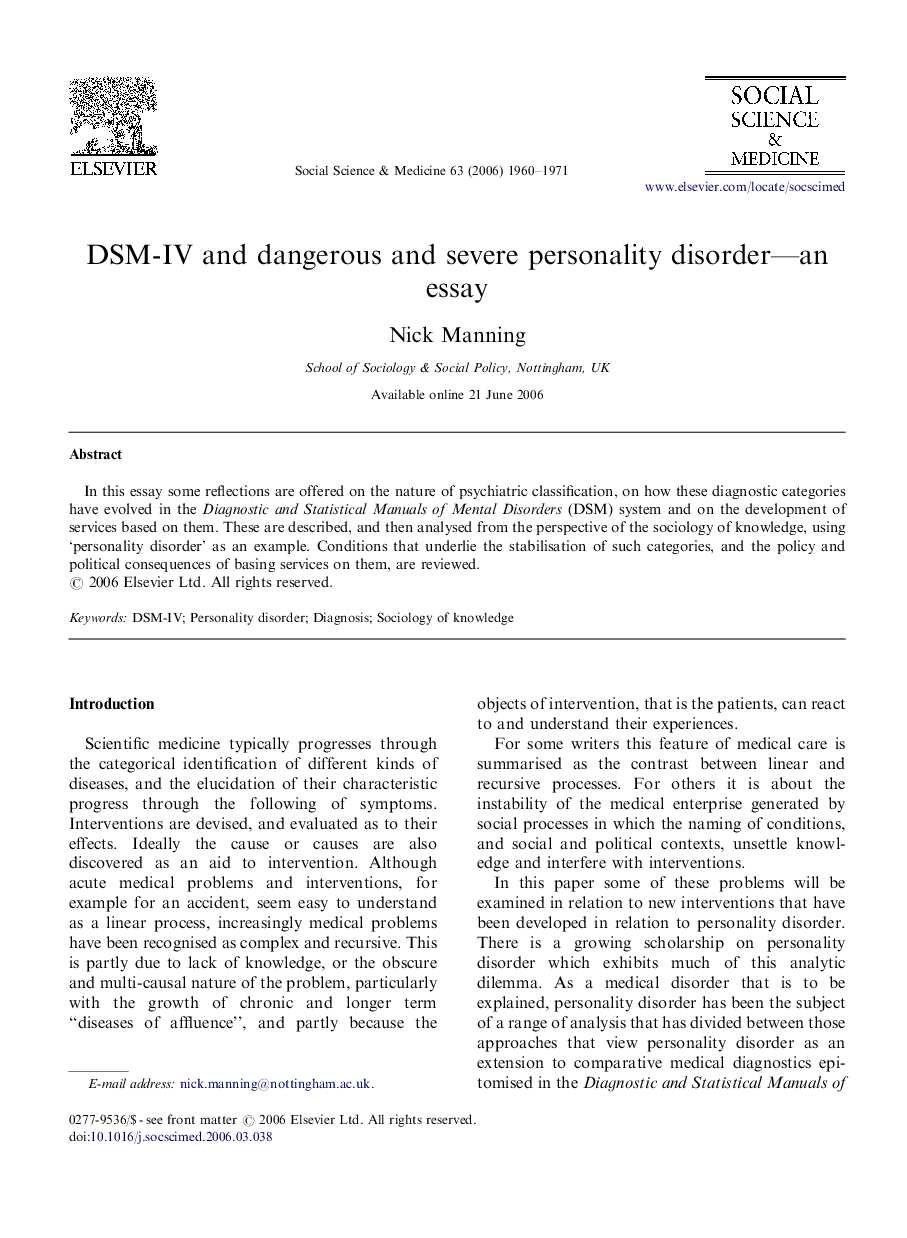Abstract
In this essay some reflections are offered on the nature of psychiatric classification, on how these diagnostic categories have evolved in the Diagnostic and Statistical Manuals of Mental Disorders (DSM) system and on the development of services based on them. These are described, and then analysed from the perspective of the sociology of knowledge, using ‘personality disorder’ as an example. Conditions that underlie the stabilisation of such categories, and the policy and political consequences of basing services on them, are reviewed.
Introduction
Scientific medicine typically progresses through the categorical identification of different kinds of diseases, and the elucidation of their characteristic progress through the following of symptoms. Interventions are devised, and evaluated as to their effects. Ideally the cause or causes are also discovered as an aid to intervention. Although acute medical problems and interventions, for example for an accident, seem easy to understand as a linear process, increasingly medical problems have been recognised as complex and recursive. This is partly due to lack of knowledge, or the obscure and multi-causal nature of the problem, particularly with the growth of chronic and longer term “diseases of affluence”, and partly because the objects of intervention, that is the patients, can react to and understand their experiences.
For some writers this feature of medical care is summarised as the contrast between linear and recursive processes. For others it is about the instability of the medical enterprise generated by social processes in which the naming of conditions, and social and political contexts, unsettle knowledge and interfere with interventions.
In this paper some of these problems will be examined in relation to new interventions that have been developed in relation to personality disorder. There is a growing scholarship on personality disorder which exhibits much of this analytic dilemma. As a medical disorder that is to be explained, personality disorder has been the subject of a range of analysis that has divided between those approaches that view personality disorder as an extension to comparative medical diagnostics epitomised in the Diagnostic and Statistical Manuals of Mental Disorders-IV (DSM-IV) system ( APA, 1952–2000), and those that view personality disorder as the development of relevant health and social services. The DSM-IV has placed personality disorder in its own separate axis, axis II, as a special mental disorder. From this point of view the essence of personality disorder is that it is an “exceptional case” driven by a number of unique aspects, such as the absence of physical and mental symptoms, lack of biochemical basis for treatment, and rejection as a serious mental disorder by many psychiatrists. Nevertheless there are renewed and vigorous attempts to bring personality disorder into the standard methods of diagnostic identification and evidence based medical research. However, as a mental health problem personality disorder has grown historically in relation to troubling conditions, such as anti-social behaviour, self-harm, and the recognition of the high incidence of and damage caused by child neglect and abuse. Tension between criminological and medical/social frameworks has resulted in a moving boundary between them—the “Welsh Marches” of personality disorder.
In this paper two approaches to understanding personality disorder will be contrasted. The DSM-IV view has placed personality disorder in the context of other mental disorders, where the key focus has been on the construction of diagnostic classifications. The health policy view in contrast has attempted to understand personality disorder as a category in its own right, but with a detailed appreciation of its uneven nature, and in particular the reasons for the developmental patterns that different parts have exhibited. In this case the key focus has been on the analysis of personality disorder over time.


